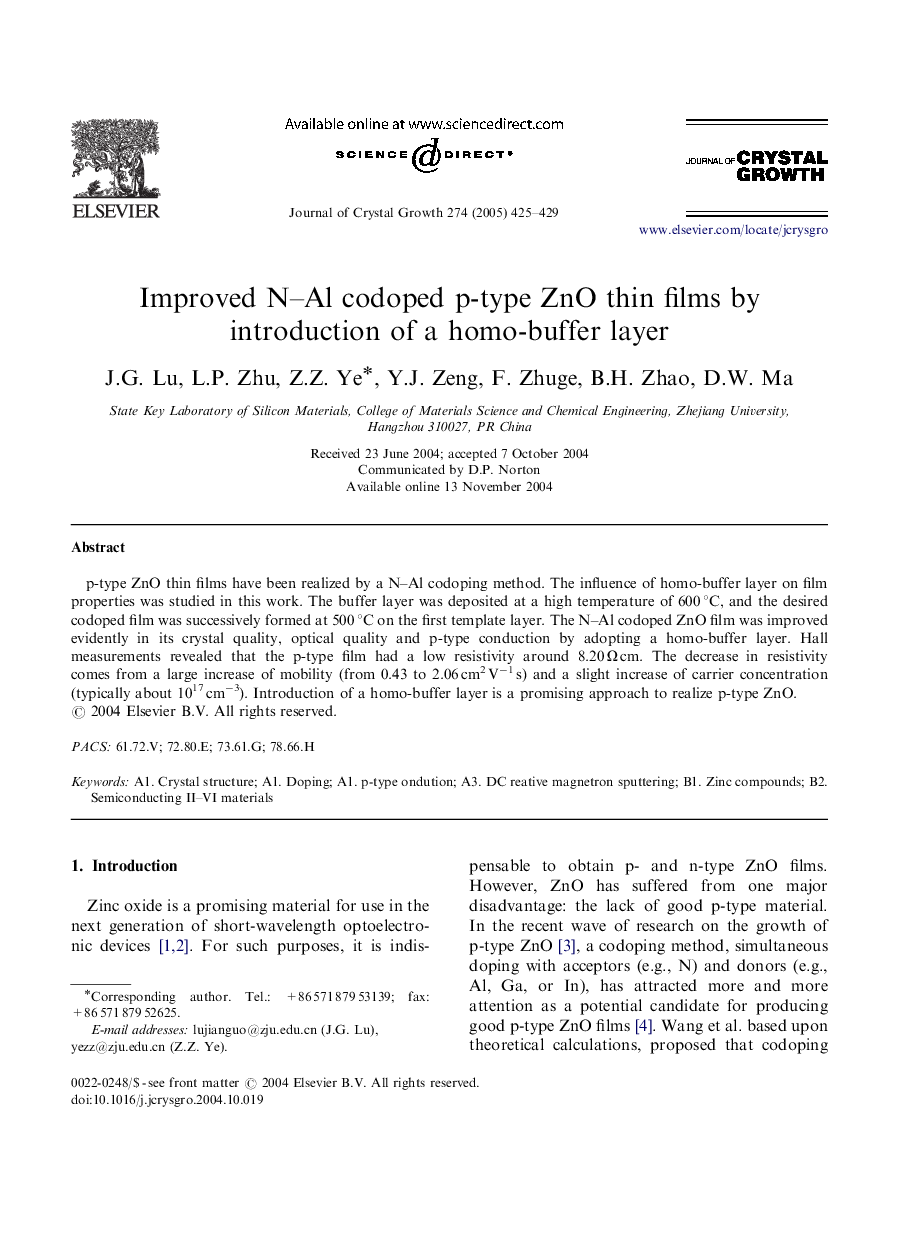| Article ID | Journal | Published Year | Pages | File Type |
|---|---|---|---|---|
| 9830229 | Journal of Crystal Growth | 2005 | 5 Pages |
Abstract
p-type ZnO thin films have been realized by a N-Al codoping method. The influence of homo-buffer layer on film properties was studied in this work. The buffer layer was deposited at a high temperature of 600 °C, and the desired codoped film was successively formed at 500 °C on the first template layer. The N-Al codoped ZnO film was improved evidently in its crystal quality, optical quality and p-type conduction by adopting a homo-buffer layer. Hall measurements revealed that the p-type film had a low resistivity around 8.20 Ω cm. The decrease in resistivity comes from a large increase of mobility (from 0.43 to 2.06 cm2 Vâ1 s) and a slight increase of carrier concentration (typically about 1017 cmâ3). Introduction of a homo-buffer layer is a promising approach to realize p-type ZnO.
Keywords
Related Topics
Physical Sciences and Engineering
Physics and Astronomy
Condensed Matter Physics
Authors
J.G. Lu, L.P. Zhu, Z.Z. Ye, Y.J. Zeng, F. Zhuge, B.H. Zhao, D.W. Ma,
